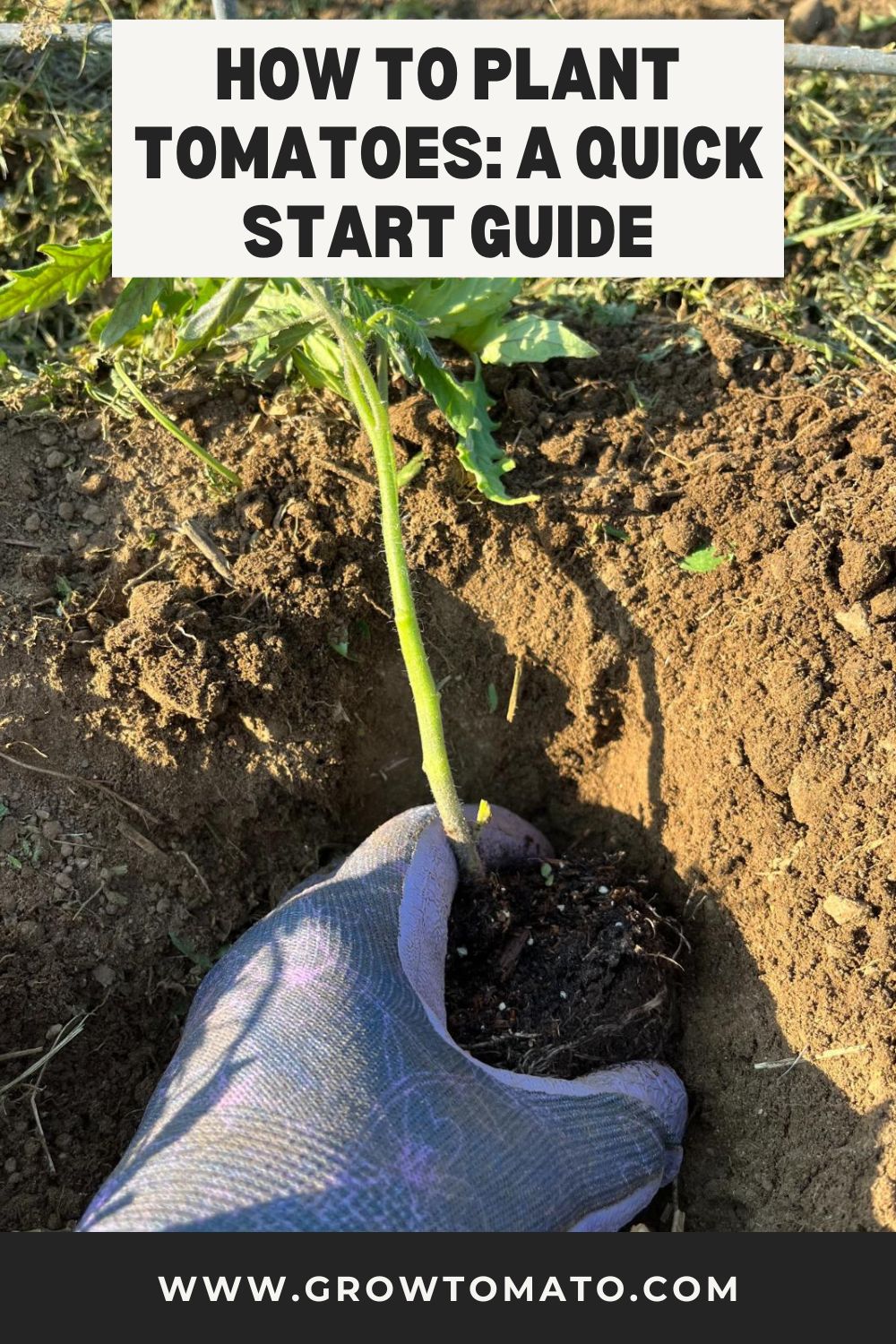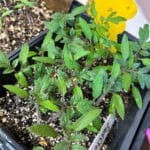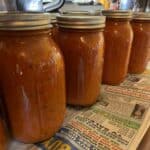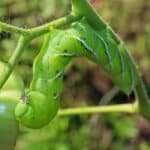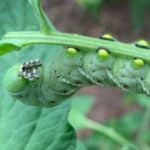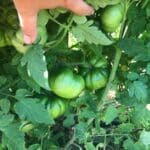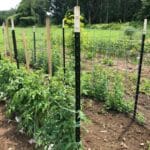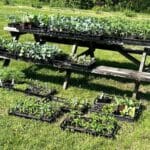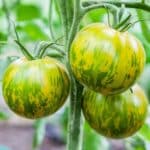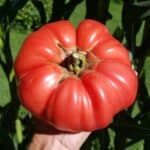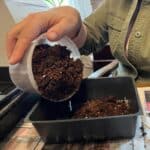Tomatoes are easy to plant and not too difficult to grow (though there are some pests and diseases you may need to deal with – a topic for another day later in the season!).
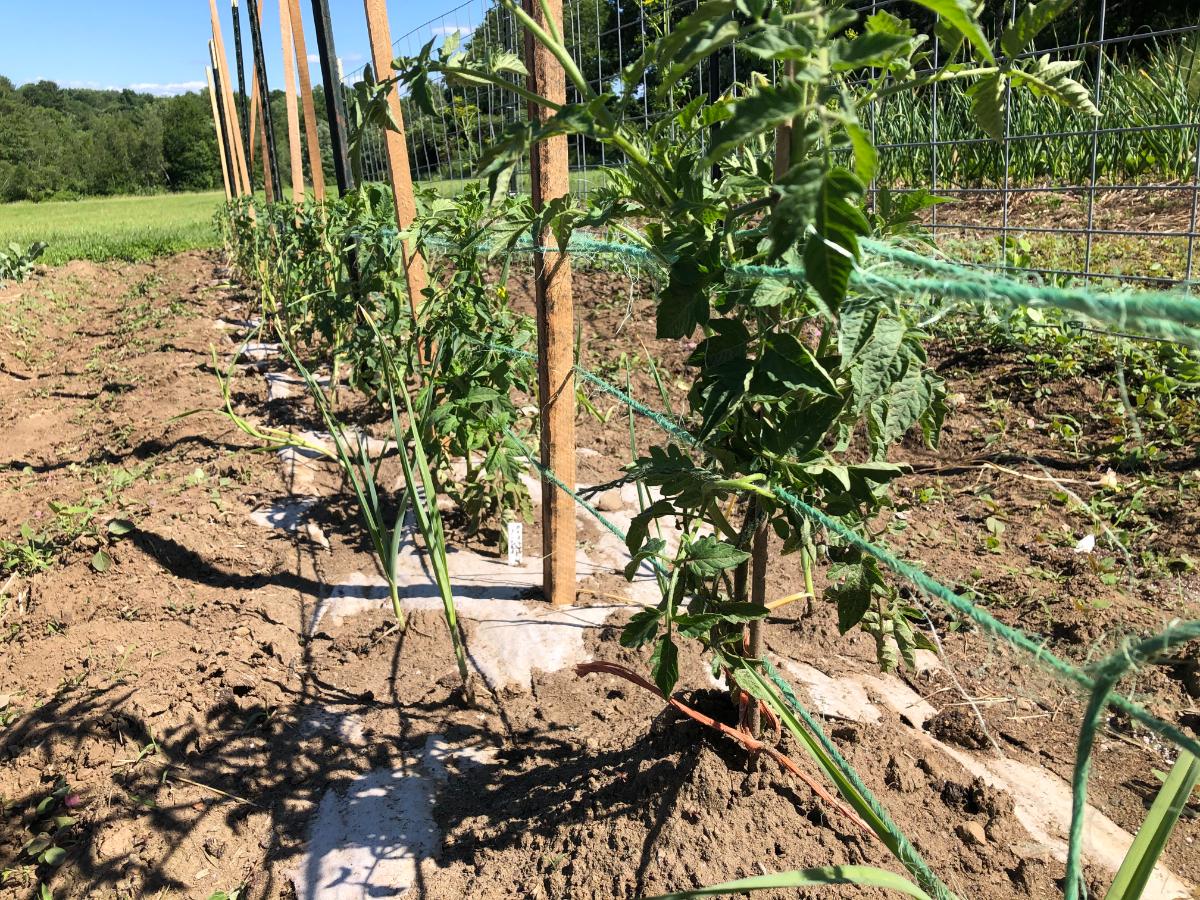
If you’re new to growing tomatoes, or if you’re looking for some pointers or tips for planting tomatoes successfully, here’s a quick start guide to get your growing:
Jump to:
- Harden Off Tomato Plants 10 to 14 Days Before Planting
- Choose the Right Time for Planting
- Prepare Your Soil
- Remove from Pots Safely
- Plant Deeply for Extra Root Growth and Anchoring (And to Correct Issues in Seedlings)
- Cover and Tamp In to Secure
- Water in Thoroughly
- Mulch for Better Disease Control
- Plant Support Systems with Your Tomato Transplants
- Keep Watered Regularly Until Deep Roots Grow
- Continue to Tie Up Tomato Plants as they Grow
- Attention and Consistency Make Good Tomato Gardens
Harden Off Tomato Plants 10 to 14 Days Before Planting

Tomatoes are almost always started from seed inside – either inside your house or inside a greenhouse or nursery. Before they can handle outdoor conditions, they need to be hardened off.
Hardening off is a process of gradually introducing your tomato plants to living outdoors so they get used to the changing and more trying conditions outside. It’s an important step, and you don’t want to skip it.
Tomato plants that aren’t properly hardened off often suffer from transplant shock, wilting, and breakage. Take the time.
Choose the Right Time for Planting
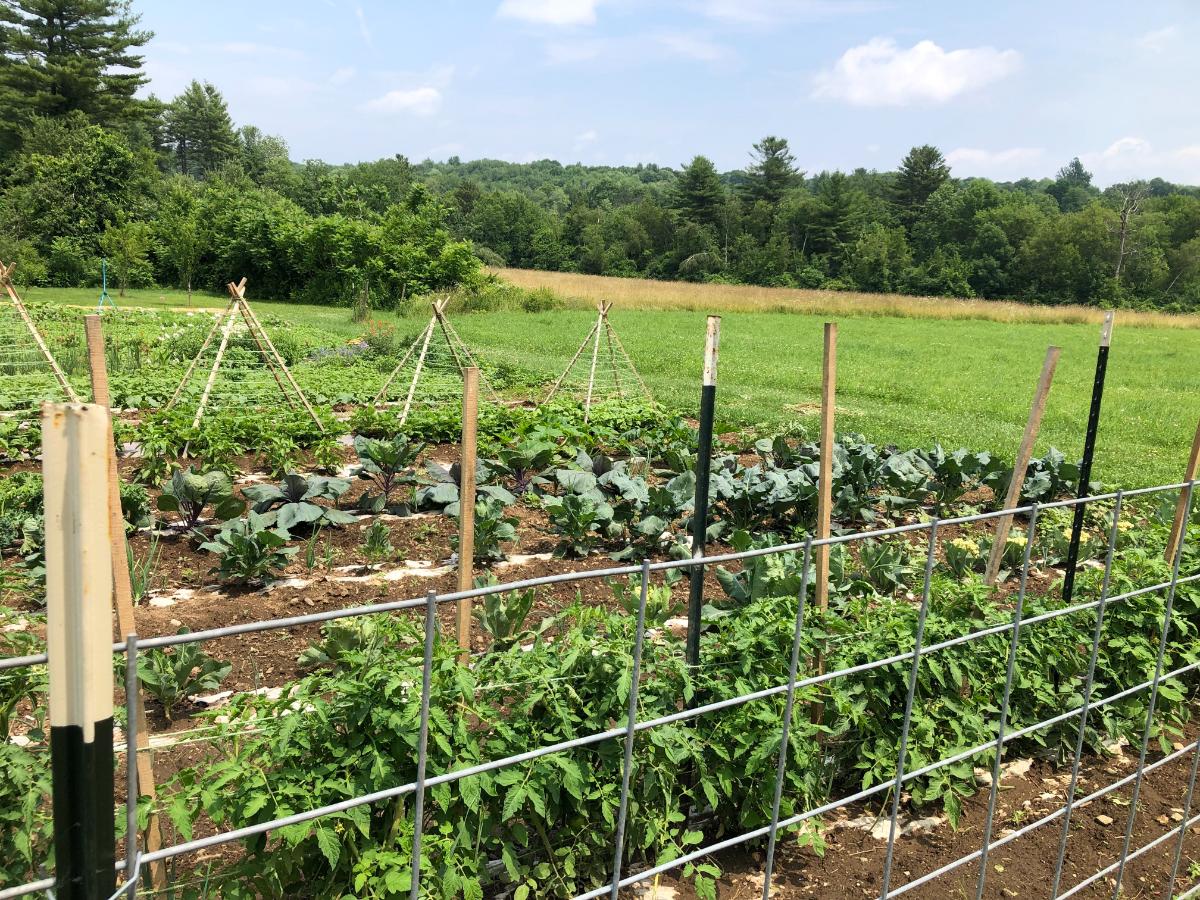
Success with tomatoes starts with picking the right time to plant your tomatoes. Tomatoes are tender annuals and warm season crops, so they need to be planted later than cold-tolerant vegetables like broccoli and peas.
Plant tomatoes after the danger of frost has past.
The rule of thumb here is to wait until the average last frost date for your area, and plant some time after that –usually that week or within two weeks of your expected last frost date. This will give you the longest growing season with the least chance of frost burning and killing your tomato transplants.
Last frost dates are historical averages, though. That means that sometimes, we get frost after we normally would. If you look at your extended forecast and see temperatures hovering around or below freezing, you should wait to plant. Even if the calendar says, the time is right.
Sometimes these frosts aren’t predicted far enough in advance and you might have tomatoes in the ground and a late frost. If that happens, be prepared to protect them. On nights when cold and frost is expected, protect your tomatoes by covering them with old sheets, floating row cover, or cloches.
Tomatoes do best if you wait to plant them until the days and nights have warmed consistently.
- Plant tomatoes when daytime temperatures are in the 70’s (Fahrenheit, or 23+ Celsius)
- Nighttime temperatures should be in the 50’s F or around 10 C
- If you have nights that are still hovering in the 40-degree range (F), wait to let things warm up a bit more
Other measures like soil temperature and phenological signs can help guide your tomato planting. Read more here: 4 Measures That Tell You When To Start Planting
Prepare Your Soil
Tomatoes are heavy feeders, so it’s important that you put them into good soil. Amend your soil with fertilizer and/or compost before planting. Aged manure is a good choice, too.
If you feel you need to apply a fertilizer, it should be one that is high in nitrogen. An all-purpose fertilizer with a content of 20-10-10 or 16-6-6 is recommended.
Work the amendments or fertilizer into the soil. Till or dig the soil to create a light, aerated, fluffy base.
There are other things that you can add to planting holes to give your tomato plants a boost. Here are some recommendations: 4 Must-Have Ingredients to Use While Planting Tomatoes + What to Avoid
Remove from Pots Safely

When planting your tomatoes, take care to remove them safely from the growing cells or pots and be careful not to break or damage the plant – especially the stem!
If you break the tomato off at the stem and there are no leaves left to photosynthesize, your tomatoes will die.
The best way to remove and handle tomato transplants is to gently squeeze and tap the sides and bottom of the pot and roots to loosen the plant and the soil.
With your hand over the base of the plant, tip it out into your hand.
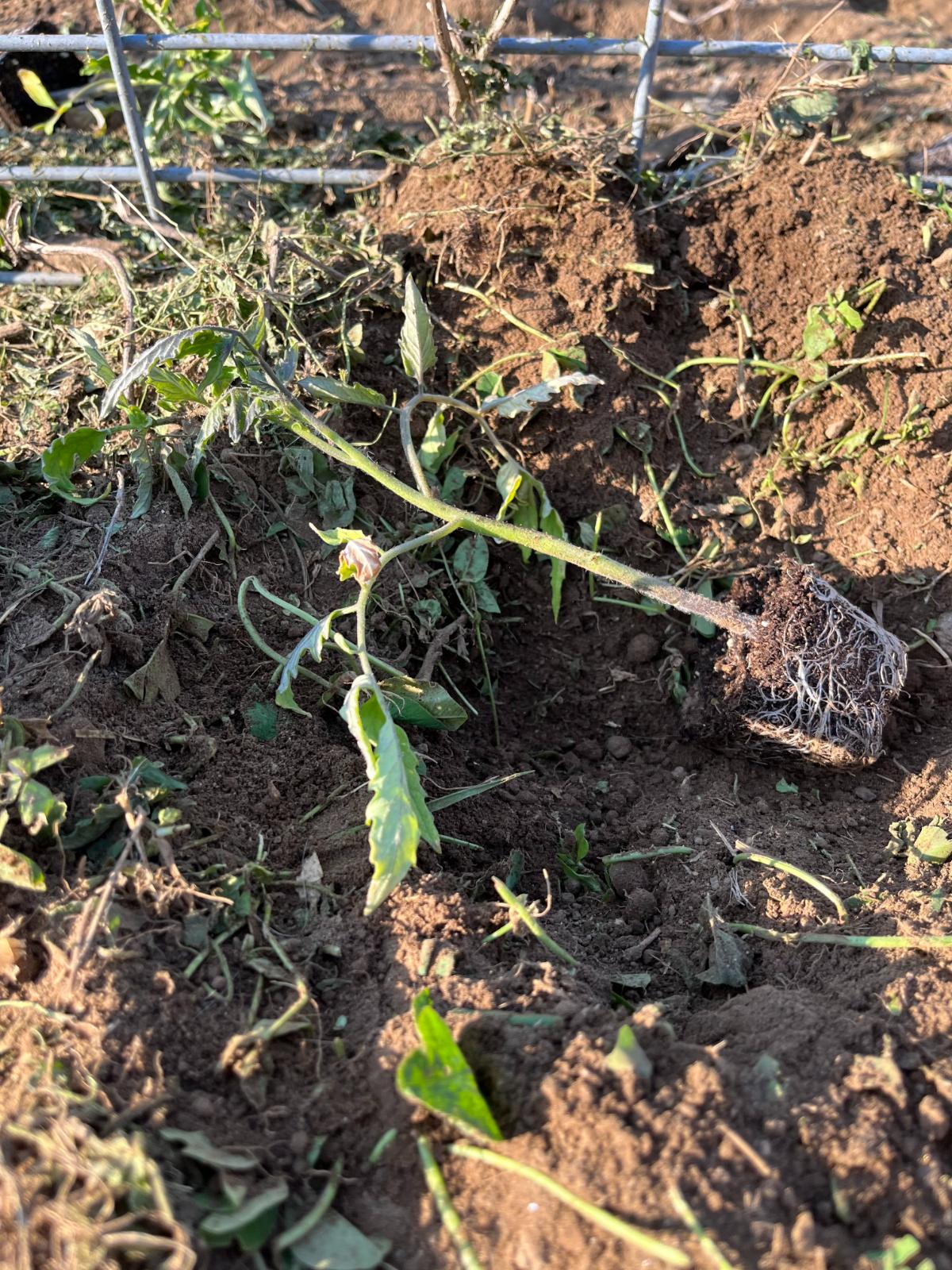
The strongest point of attachment, and thus the strongest part of your tomato transplants, are the leaf attachments. Either handle the plants by the soil and root ball or by the leaves, not the stems.
Plant Deeply for Extra Root Growth and Anchoring (And to Correct Issues in Seedlings)
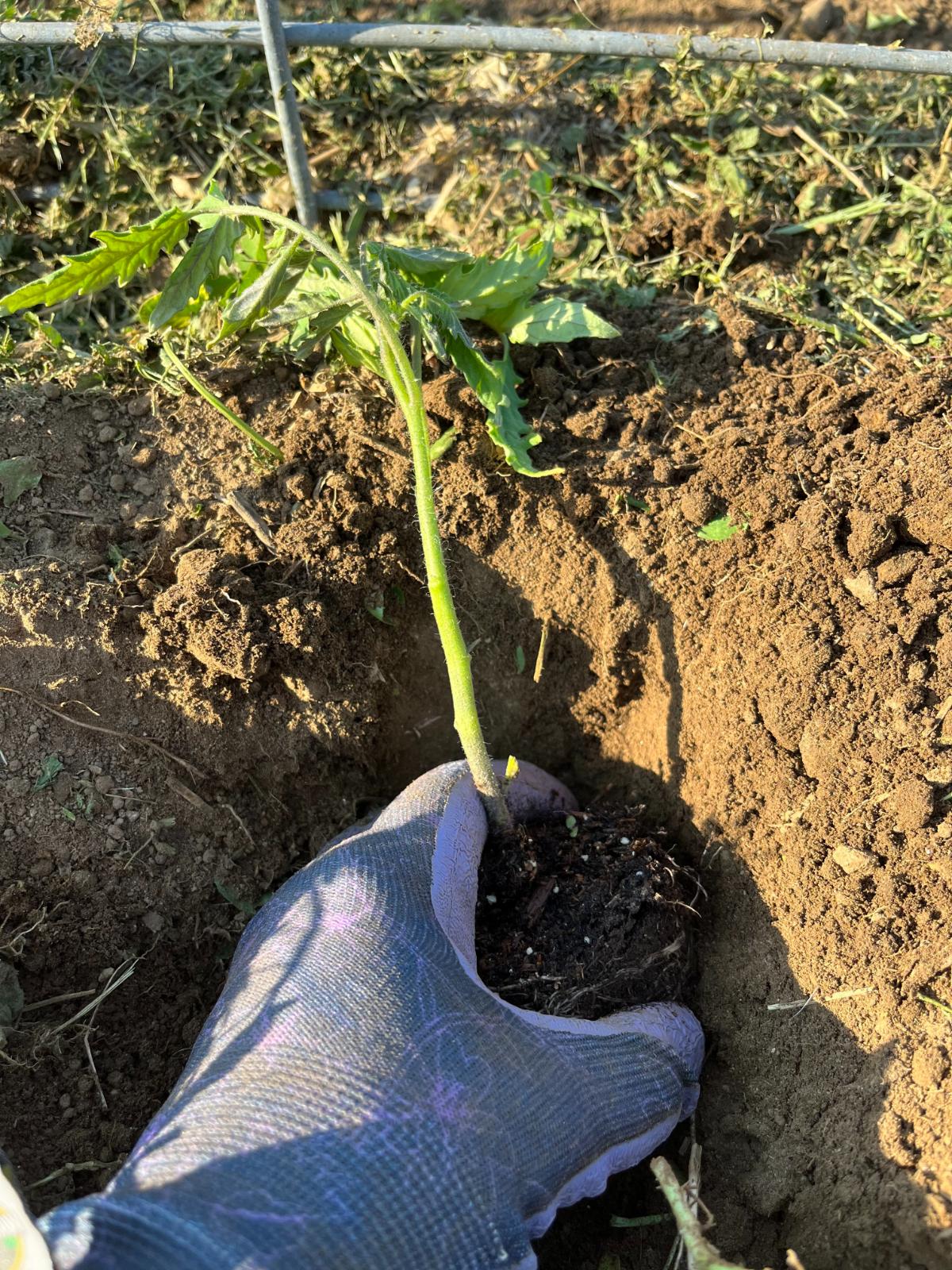
One advantage of tomatoes is that they can develop roots from their stems. These are called adventitious roots and they grow from follicles on the stem when the stem is buried deeply in the ground.
In humid conditions or when parts of a stem are close to the ground, they may even grow air roots over the course of the summer (these are safe, harmless, and can be ignored).
What's good about this when planting tomato transplants is that you can bury the plants deeper down on the stem. Remove the bottom set of leaves and plant all the way up to where you pulled off the leaves. The entire buried section will grow new roots, which will help feed and water your tomato plants and also create a stronger anchoring system.
Another reason this is helpful is because it gives you an opportunity to correct weaknesses in seedling transplants.
For example, if the seedlings grew long and leggy inside under grow light, bury the stems deeper. That will leave you with older, stronger stems above the ground and build a better, more supporting root system.
When planting tomatoes, bury them at least up and over the soil line. Deeper is even better.
Cover and Tamp In to Secure
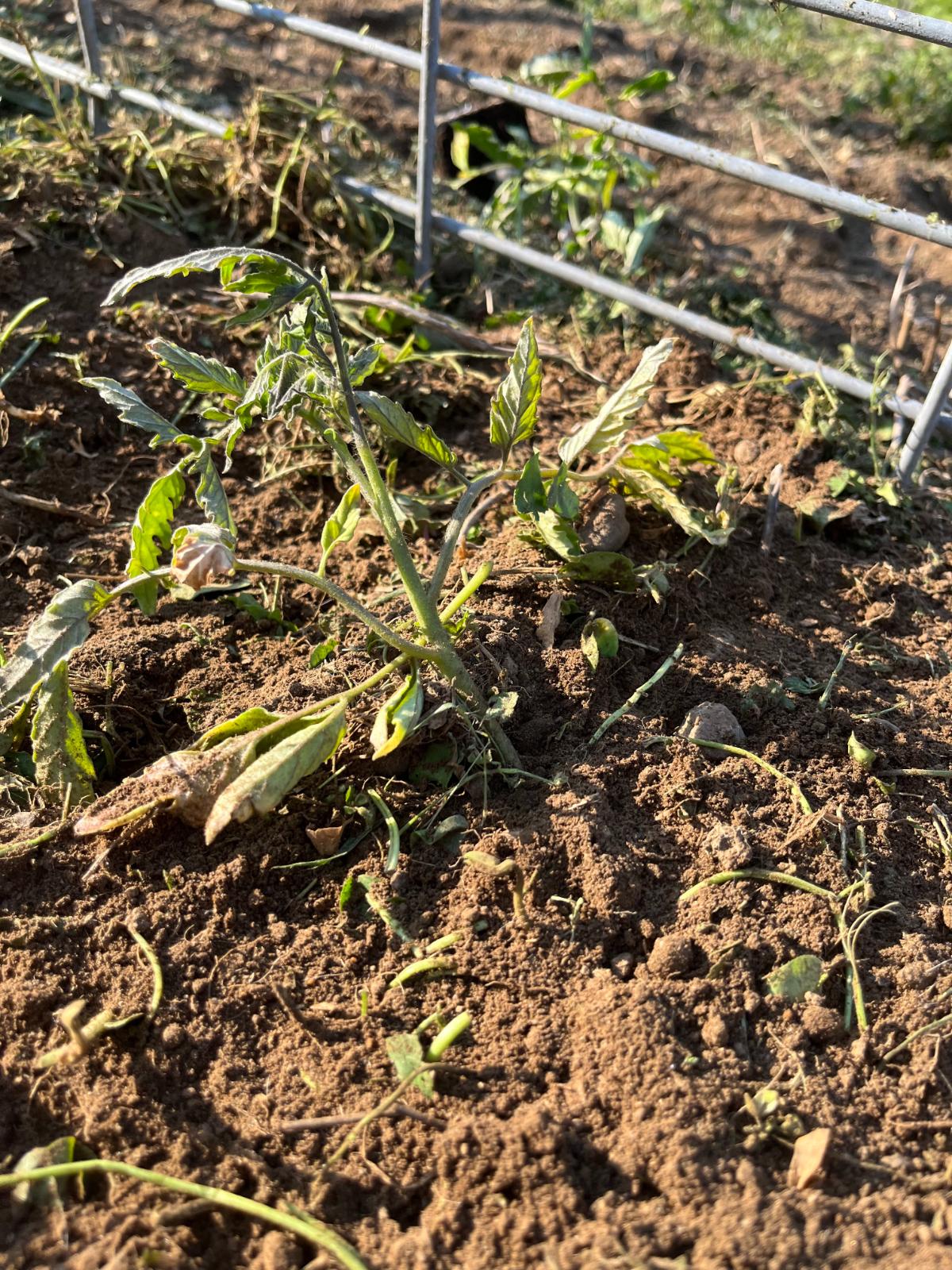
Backfill the hole with loose soil. Again, it should be at least to the potting soil line or above.
Tamp down the soil to remove large air pockets and make sure the plant is firmly secured in the soil. You don’t want a stiff breeze to uproot your new transplants!
Water in Thoroughly
Now, give each tomato plant a good drink of water. This will make sure that the water is close enough for the young plants and short roots to access it and stay hydrated. It’s easy for newly planted tomatoes to dry out before their roots develop if the top of the soil is not kept moist.
Mulch for Better Disease Control
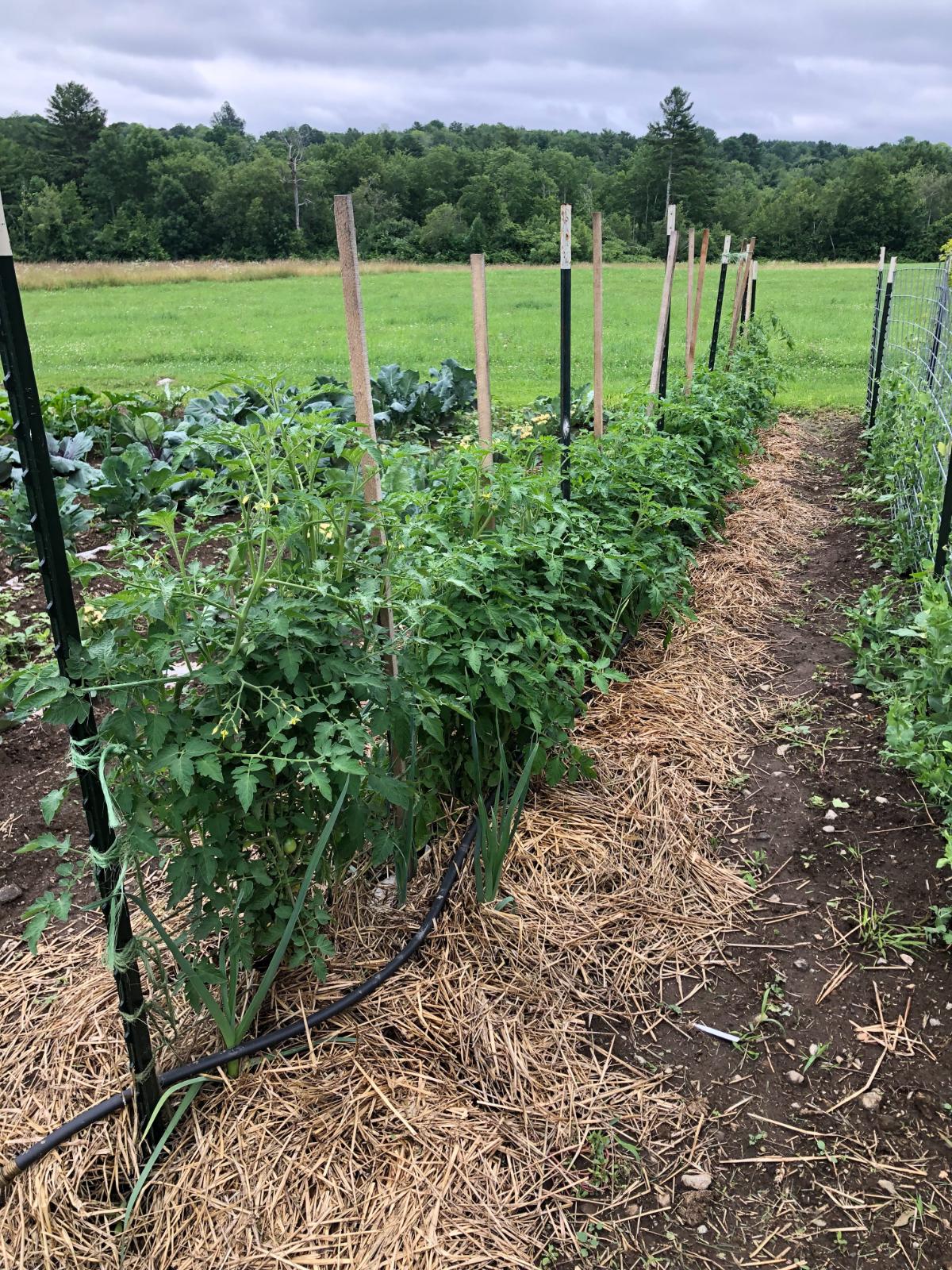
It’s always wise to mulch the soil over your tomatoes when you plant them. One of the biggest sources of tomato diseases is fungi. These live in the soil. When it rains, soil splashes up onto your tomato stems and leaves and carries fungal spores with it.
Given the right opportunity, those fungi will grow into fungal disease like blight. Mulching is a simple and very effective way to prevent blight.
It’s best to lay out your mulch when you plant so that soil splash never has a chance of causing problems. Mulch a wide row around your plants because they will grow fast and large. Mulch at least a swath two feet wide; three feet wide is even better.
There are many good mulching options for tomatoes. Weed barrier fabrics, straw and sawdust are a few good ones that do an excellent job of controlling soil splash on tomatoes.
Plant Support Systems with Your Tomato Transplants

With the exception of a few short, dwarf, bush varieties, most tomato plants need to be supported. Some options for trellising tomatoes include
- Stakes
- Cattle panels
- Tomato cages
- Weave systems like the Florida weave
- Trellises
Whatever system you choose, install it when you plant your tomatoes, or even beforehand. If you wait to install stakes and supports after your tomatoes have started to grow, there’s a high likelihood that you will stake through their roots and damage the roots and/or the plant.
Besides that, once tomatoes acclimate, they take off and grow fast and furiously. You will need to start tying or supporting your tomato plants within a week or two – so there’s no time to wait and waste!
Keep Watered Regularly Until Deep Roots Grow
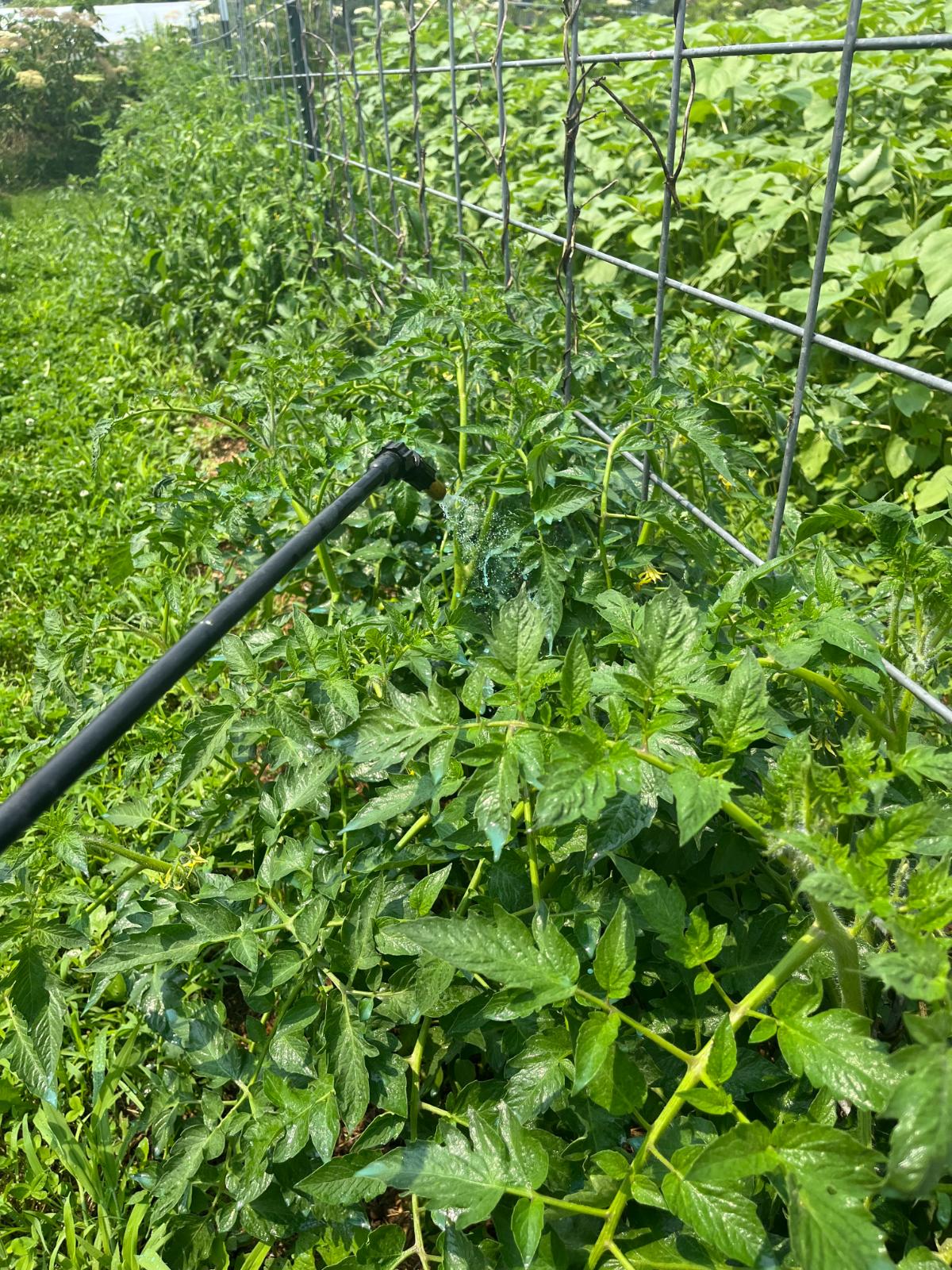
Once your tomatoes have grown some size and their roots have reached some depth, they will be able to access water and moisture that is deep in the ground. In the beginning, though, those roots will only be about three or four inches deep. This is the part of the soil that dries out the fastest.
Even if you’ve had recent rain, you need to make sure there is moisture close enough to the surface of the soil to support your tomatoes early on. Make sure there is accessible water in the top four to six inches of soil, or your tomatoes might dehydrate, wilt, and die.
Once established, you can reduce the frequency of watering. If you get an inch or more of rain per week, you shouldn’t have to water at all but if you get less than that then water enough to make up the difference.
It’s best to water once or twice per week deeply than to water in short daily surface bursts after the plants are established. This forces the roots to reach down for water and they will grow deeper, stronger roots that anchor the plant better. This also helps the roots to get down into the soil where the nutrients are.
Watering from the bottom is always best with tomatoes. Soaker hoses or base watering with a stream are best. This keeps the leaves and stems dry and reduces the risk of mildew and fungal disease (like blights).
Continue to Tie Up Tomato Plants as they Grow
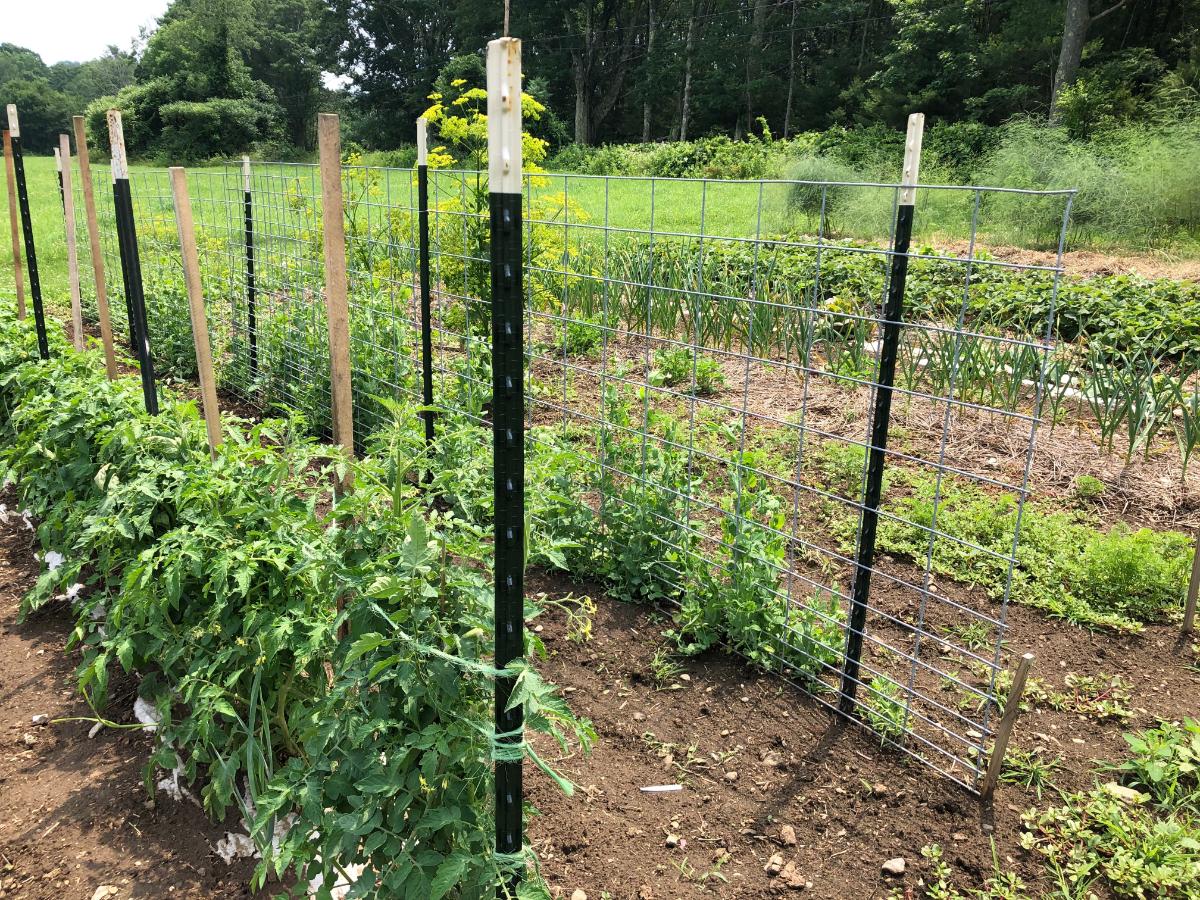
Plan to tie your tomatoes to the stakes or trellises (or add to your weave or support system) weekly or more often if needed. Tomatoes grow fast. You’ll need to keep them supported and trained to their supports.
Tie up every four to six inches of new growth for the best support. Try not to skip a week, or the new growth will be difficult to tie and control without breaking the stems and branches.
Attention and Consistency Make Good Tomato Gardens
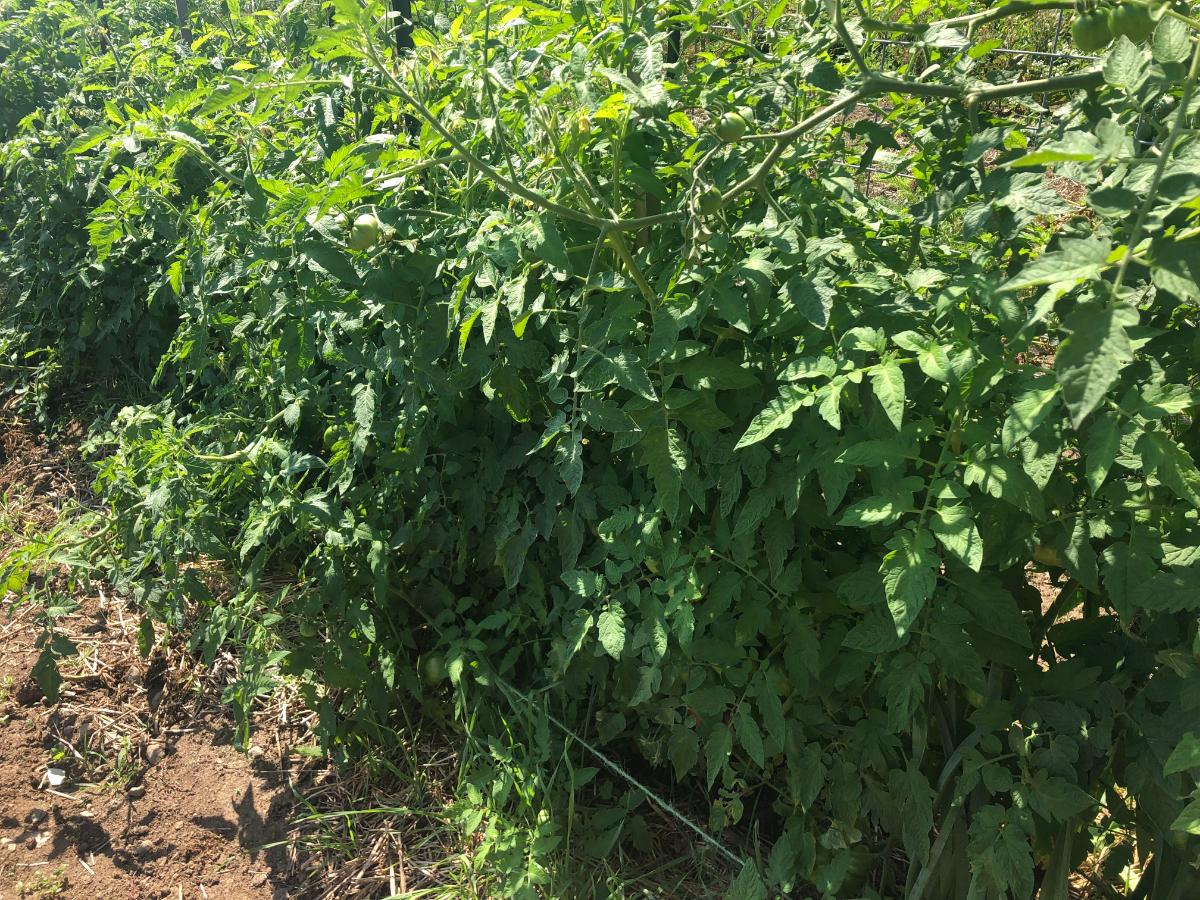
Tomatoes are not particularly hard to grow but they are not “set it and forget it” plants, either.
- You will need to keep your tomatoes watered if you don’t get enough rain to do the job
- You need to tie your plants weekly
- If you plan to prune your plants, this needs to be done weekly as well (this is for indeterminate varieties – determinate tomatoes aren’t usually pruned)
- Look your plants over regularly and look for early signs of stress, pests, or disease
- It's much easier to treat pests and diseases early when they have just started
Early care and good maintenance will prevent significant disease and give your tomatoes the resources and support they need. If you do this, you are sure to be successful with your tomato harvest.
